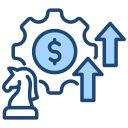How REITs Turn Buildings into Income
A REIT owns or finances income-producing real estate, collects rent or interest, and distributes most of its taxable income to shareholders. This structure lets everyday investors tap professional property management, scale, and diversification—without fixing leaky roofs or negotiating leases themselves.
How REITs Turn Buildings into Income
Dividends come from real leases, actual tenants, debt schedules, and interest costs. Cash flows depend on occupancy, rent growth, and financing discipline. It feels passive, but behind the scenes are quarterly reports, lease renewals, and capital markets. Understanding these drivers helps you keep income steady through cycles.
How REITs Turn Buildings into Income
A reader once shared how a surprise $6.27 dividend reinvestment sparked a habit of adding $50 monthly to a diversified REIT basket. That small, consistent action built confidence, smoothed market noise, and turned irregular saving into a predictable passive income routine worth celebrating.
How REITs Turn Buildings into Income
Lorem ipsum dolor sit amet, consectetur adipiscing elit. Ut elit tellus, luctus nec ullamcorper mattis, pulvinar dapibus leo.









